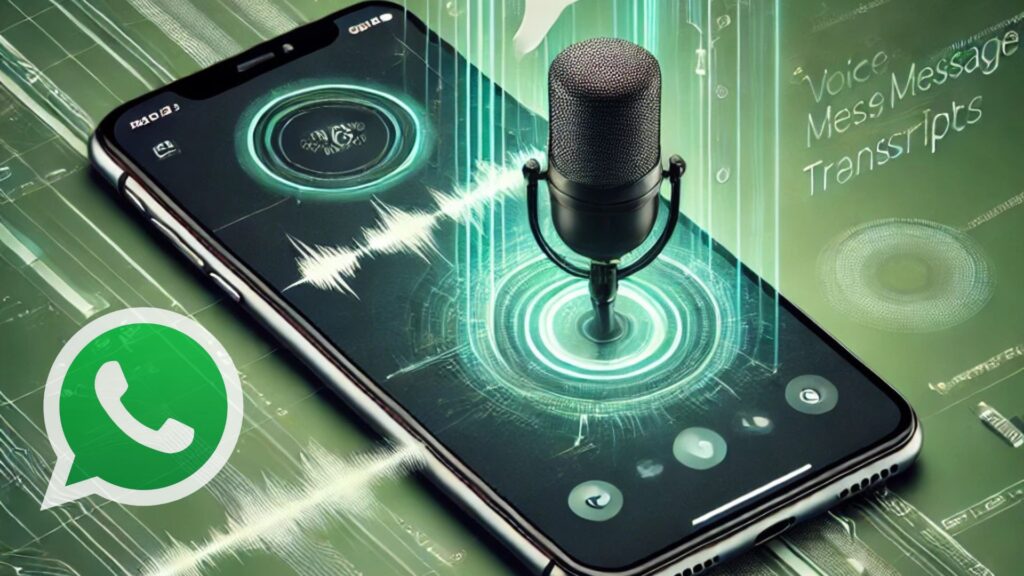WhatsApp Voice Message Transcripts Revolutionize User Experience
WhatsApp has officially introduced voice message transcription, a long-awaited feature aimed at enhancing accessibility and convenience for its 2 billion global users. This feature enables users to convert audio messages into text, addressing challenges like noisy environments, hearing impairments, or simply the inability to listen to audio messages in certain settings.
WhatsApp voice message transcripts allow users to read their audio messages as text. Powered by advanced machine learning algorithms, the feature processes voice messages locally on the user’s device. This ensures privacy and aligns with WhatsApp’s end-to-end encryption policies.
The feature is currently available in English, Spanish, and Hindi, with plans to include more languages in future updates. Users can enable this feature by navigating to the app’s settings menu under the “Chats” section. Once activated, the app will display the transcription below the voice message.
The addition of this feature is part of WhatsApp’s strategy to make the platform more user-friendly, especially in professional and global contexts. Transcriptions can also be searched, making it easier for users to locate specific information in long conversations.
The WhatsApp voice message transcripts feature operates entirely on-device, using machine learning models integrated into the app. Unlike cloud-based transcription tools, WhatsApp processes audio locally, ensuring that audio files never leave the user’s phone. This approach eliminates privacy concerns and reinforces WhatsApp’s commitment to secure communication.
Users can view the transcription in real-time or after the voice message has been sent. The app supports multiple accents and regional pronunciations, making it highly versatile. However, certain factors like background noise or unclear speech may affect accuracy.
This feature addresses several user pain points. For professionals, it eliminates the need to replay lengthy audio messages, saving time and increasing efficiency. Travelers in noisy places like airports or train stations can now read important messages without struggling to hear them.
The tool also benefits users with hearing impairments, making WhatsApp a more inclusive platform. Additionally, the transcription feature enables keyword searches, allowing users to quickly retrieve critical information from long conversations.
For multilingual users, voice message transcripts simplify communication by converting spoken content into readable text. This is particularly useful in regions where voice messaging is a dominant form of communication, such as South America and Southeast Asia.
The transcription feature is available on both Android and iOS devices. However, users must update to the latest version of WhatsApp to access it. Compatibility depends on the device’s hardware, as the feature requires sufficient processing power for on-device transcription.
Meta, WhatsApp’s parent company, announced that the feature would initially support a limited number of languages. Expansion to other languages is expected in subsequent updates to cater to the app’s diverse user base. Popular languages such as Portuguese, Arabic, and Mandarin are likely candidates for future integration.
WhatsApp voice message transcripts give it a significant edge over competitors like Telegram and iMessage, which lack built-in transcription features. By offering a seamless and private solution, WhatsApp reinforces its position as a leader in the messaging app market.
This move also aligns with broader technological trends. Voice-assisted technologies like Google Assistant and Apple’s Siri have demonstrated a growing demand for voice-to-text capabilities. WhatsApp’s integration of this feature reflects its commitment to staying ahead in the evolving communication landscape.
Privacy remains a cornerstone of WhatsApp’s operations. The app ensures that voice message transcripts are stored locally and not shared with third parties. This is consistent with WhatsApp’s end-to-end encryption policy, which safeguards user data.
Meta has clarified that the transcription feature does not increase storage usage. Users can delete both the transcription and the original voice message to free up space. This gives users full control over their data while maintaining a clutter-free experience.
The voice message transcription feature has potential beyond individual users. For businesses using WhatsApp Business, this tool can streamline communication with customers by converting audio queries into text. This can help automate responses or improve customer service efficiency.
Additionally, the feature could be integrated with WhatsApp’s document-sharing capabilities. Transcriptions might enable users to generate text documents directly from voice messages, opening new possibilities for productivity.
The feature may also enhance accessibility in education and healthcare settings. For instance, students can use it to transcribe lecture recordings, while doctors can rely on it for quick transcription of patient notes.
Early feedback on WhatsApp voice message transcripts has been positive. Users appreciate the blend of innovation and privacy, noting the practicality of the feature in daily life. In markets like India and Brazil, where voice messages are widely used, the feature is expected to see significant adoption.
Industry experts view this update as a game-changer. By prioritizing user needs and leveraging advanced technology, WhatsApp has set a new benchmark for messaging apps. This development also highlights Meta’s broader focus on incorporating AI-driven solutions into its platforms.


This site consistently produces quality content and this post is not different. Your thoughts are well presented and the content is very engaging. Keep it up!
The post is packed with a lot of helpful information. We appreciate the author’s effort. Thanks for posting.